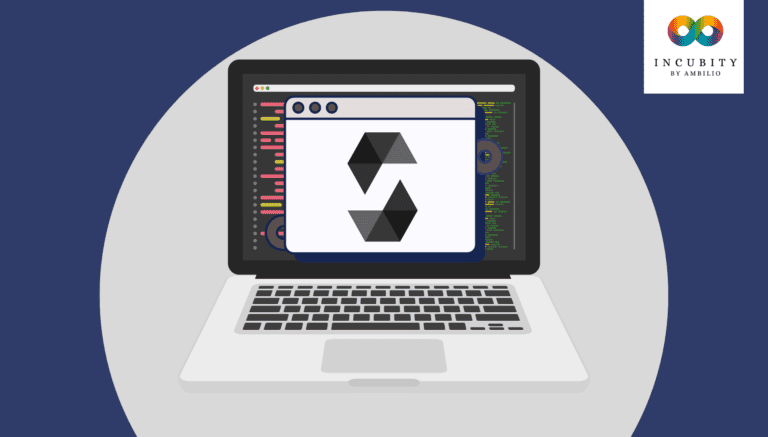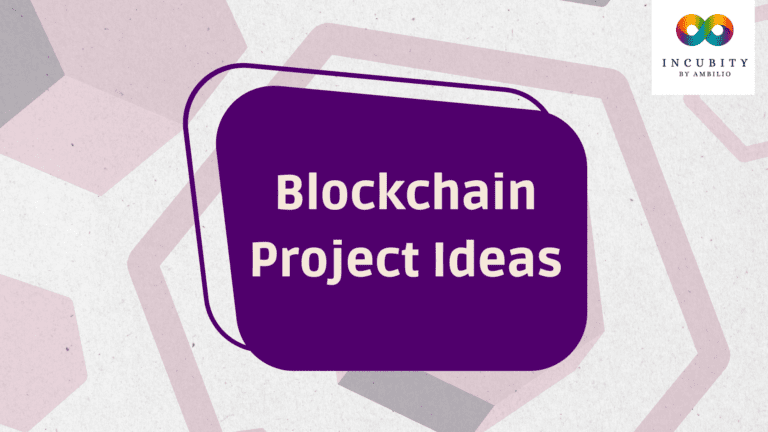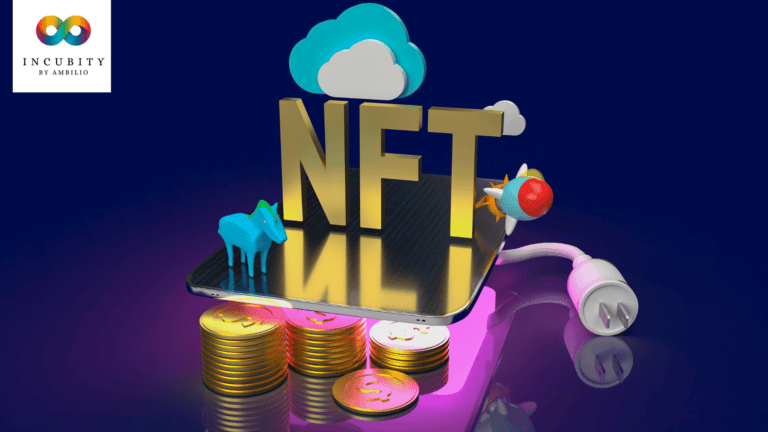Blockchain is said to be the new internet. With many possible applications and buzz around the world, blockchain systems are being explored heavily. It has a wide range of applications in financial systems mostly in payments. Cryptocurrencies are popular applications of blockchain systems. In this article, we will learn about the concepts of blockchain, explore the different advantages and disadvantages of using one, get to know the different types of blockchain, and finally, create a simple blockchain using Python.
What is Blockchain?
Blockchain is a decentralized, digital ledger that is used to record transactions across a network of computers. It was first introduced in 2008 by an anonymous individual or group of individuals using the pseudonym “Satoshi Nakamoto” in a whitepaper detailing the technology behind the first blockchain, called the Bitcoin blockchain.
A blockchain system consists of a blockchain, each containing several records or transactions. These blocks are linked together using cryptography, creating a secure and immutable chain of data. The network of computers on a blockchain maintains a copy of the ledger and works together to validate new transactions and add them to the blockchain.
When a new transaction is added to a blockchain, it is broadcast to the network, where it is verified by multiple computers, called nodes. Once a transaction is verified, it is grouped with other transactions into a block, which is then added to the existing chain of blocks. The entire network must agree on the contents of the block before it is added to the blockchain, ensuring that the ledger is accurate and resistant to tampering.
Blockchain technology has the potential to disrupt many industries by providing a secure, transparent, and decentralized way to track transactions and other types of data.
Advantages of Using Blockchain
These are some of the most notable advantages of using blockchain technology:
- Security: Blockchain’s decentralized architecture and cryptographic algorithms make it highly resistant to tampering and hacking. Each block in the chain contains a unique code, called a “hash,” that links it to the previous block. This makes it almost impossible for someone to alter the contents of a block without being detected.
- Decentralization: Blockchain eliminates the need for a central authority to oversee transactions. Instead, the network is maintained by a decentralized group of computers, called nodes, that work together to validate transactions and add them to the blockchain.
- Transparency: Transactions on a blockchain are visible to everyone on the network, providing a high level of transparency.
- Immutability: Once data is recorded to a blockchain it cannot be altered, this makes it a trustworthy source of information.
- Efficiency: Blockchain can automate processes and reduce the need for intermediaries, which can significantly lower costs and increase the speed of transactions.
- Programmability: Smart contract-enabled blockchains have an added functionality that allows for self-execution and automation, this leads to many use cases in different industries.
- Interoperability: Blockchain enables different systems to connect and share data, allowing a more seamless flow of information and value.
However, it is essential to note that the technology is still relatively new and there may be limitations depending on the specific implementation or application. Some of these limitations will be mentioned in the following section.
Disadvantages of Using Blockchain
- Scalability: Blockchain networks can become congested as more users join and more transactions are processed. This can lead to slow transaction times and high fees.
- Energy consumption: The process of maintaining a blockchain network, called mining, requires a significant amount of computing power and thus energy. This can make certain blockchains, such as the Bitcoin blockchain, relatively expensive to maintain.
- Lack of regulation: Since blockchain is decentralized and operates independently of governments and financial institutions, there are currently few regulations in place to oversee its use. This lack of oversight can create issues with fraud and money laundering.
- Limited adoption: Blockchain technology is still in the early stages of adoption and is not yet widely understood or used. This can make it difficult for individuals or businesses to find partners or customers who can use the technology.
- Complexity: The technology behind blockchain can be complex and difficult for non-technical individuals to understand. Additionally, developing and maintaining blockchain applications can be challenging and requires specialized knowledge.
- Data immutability: While data immutability is an advantage in some cases, it could also be a disadvantage if errors occur and there is a need to correct them.
- Privacy concerns: Some public blockchain transactions are recorded permanently and publicly, which raises concerns about how personal data is protected. Some blockchains have implemented privacy features to overcome this.
You have to keep in mind that blockchain technology is evolving, and improvements are being made to address some of these disadvantages.
Types of Blockchains
There are several different types of blockchain technology, each with its unique characteristics and use cases. Some of the most common types include
- Public blockchains: These are open to the public and allow anyone to participate in the network. The most well-known example of a public blockchain is the Bitcoin blockchain.
- Private blockchains: These are restricted to a specific group of participants and are typically used in enterprise settings. They are often used for supply chain management, digital identity, and other applications.
- Consortium blockchains: These are a hybrid of public and private blockchains, and are controlled by a group of organizations or pre-selected participants. They are typically used in industries such as finance and healthcare where multiple organizations need to share data.
- Hybrid blockchains: These are a combination of public and private blockchains, that allow for selective transparency and privacy. This can be done by utilizing side chains, or a two-tier network structure, where some transactions are processed on the public blockchain, while others are processed on a private blockchain.
- Side chains: These are separate blockchains that are attached to a main blockchain (parent chain). They allow for different sets of rules, or specific use cases, while still being able to share value or assets with the parent chain.
There are also other variations within these types, as some blockchain projects may have different features than others or are created to target a specific use case, but overall the above are the main types of blockchain.
Creating a Simple Blockchain
| import hashlib class Block: def __init__(self, name, data, previous_hash): self.name = name #name of the block self.data = data #data stored in the block self.previous_hash = previous_hash #hash of the previous block in the chain self.hash = self.calculate_hash() #hash of the current block def calculate_hash(self): sha = hashlib.sha256() sha.update((self.name + self.data + self.previous_hash).encode(‘utf-8’)) return sha.hexdigest() class Blockchain: def __init__(self): self.chain = [self.create_genesis_block()] def create_genesis_block(self): return Block(“Genesis Block”, “”, “0”) def add_block(self, new_block): new_block.previous_hash = self.chain[-1].hash new_block.hash = new_block.calculate_hash() self.chain.append(new_block) def display_blockchain(self): for block in self.chain: print(“Name: “, block.name) print(“Data: “, block.data) print(“Previous Hash: “, block.previous_hash) print(“Hash: “, block.hash) print() def display_block(self, block_index): block = self.chain[block_index] print(“Name: “, block.name) print(“Data: “, block.data) print(“Previous Hash: “, block.previous_hash) print(“Hash: “, block.hash) # Initialize blockchain blockchain = Blockchain() # Add blocks to the blockchain blockchain.add_block(Block(“Block 1”, “Block 1 Data”, “”)) blockchain.add_block(Block(“Block 2”, “Block 2 Data”, “”)) blockchain.add_block(Block(“Block 3”, “Block 3 Data”, “”)) # Display the entire blockchain blockchain.display_blockchain() # Display a single block blockchain.display_block(1) |
The previous code is an example of a simple blockchain implemented in Python. It consists of two classes: ‘Block’ and ‘Blockchain’.
The Block class is defined with the following attributes:
- name: A string representing the name of the block.
- data: A string representing the data stored in the block.
- previous_hash: A string representing the hash of the previous block in the chain.
- hash: A string representing the current block’s hash.
The class also has a method called ‘calculate_hash()’ that calculates the hash of the current block using the SHA-256 algorithm. The method takes the name, data, and previous_hash, concatenates them, and calculates the SHA-256 hash of the resulting string.
The Blockchain class is defined with the following attribute:
- chain: A list of blocks representing the blockchain.
The class has the following methods:
- ‘create_genesis_block()’: Creates the first block in the blockchain, also called the Genesis Block.
- ‘add_block(new_block)’: Takes in a new block, sets the previous hash of the block to the hash of the current last block in the chain, then calculates the new block’s hash and adds it to the end of the blockchain.
- ‘display_blockchain()’: Displays the entire blockchain by iterating through the list of blocks and printing out the name, data, previous hash, and hash of each block.
- ‘display_block(block_index)’: Displays a single block by its index in the list of blocks by retrieving the block by its index and printing out its name, data, previous hash, and hash.
The code creates an instance of the ‘Blockchain’ class and assigns it to the variable blockchain. Then it adds three new blocks to the blockchain using the add_block() method, passing in Block objects with different names, data, and previous_hash.
Finally, the code displays the entire blockchain by calling the ‘display_blockchain()’ method on the blockchain object and displays a single block by calling the ‘display_block(block_index)’ method on the blockchain object and passing in the index of the block you want to display.
It’s worth noting that this code is an example and it’s not production ready, the hash functions are not properly salted, the blocks are not timestamped, the chain is not hard to manipulate and it doesn’t include any security or privacy measures.
The output of the code:
| blockchain.display_blockchain() |
Name: Genesis Block
Data:
Previous Hash: 0
Hash: 8500b59bb5271135cd9bcbf0afd693028d76df3b9c7da58d412b13fc8a8f9394
Name: Block 1
Data: Block 1 Data
Previous Hash: 8500b59bb5271135cd9bcbf0afd693028d76df3b9c7da58d412b13fc8a8f9394
Hash: f4761a29117521e8a9da14bdf8903b91d01b545767843205472f013e6c5331fe
Name: Block 2
Data: Block 2 Data
Previous Hash: f4761a29117521e8a9da14bdf8903b91d01b545767843205472f013e6c5331fe
Hash: ad9d240f3ff4356b8dafced2fe25357223b8333ca33a009c160f942642c5f4bf
Name: Block 3
Data: Block 3 Data
Previous Hash: ad9d240f3ff4356b8dafced2fe25357223b8333ca33a009c160f942642c5f4bf
Hash: b1de227ace8c7536124cca79a15b9ed514810dcefff4a06e6b37e79167cf8fe9
| blockchain.display_block(1) |
Name: Block 1
Data: Block 1 Data
Previous Hash: 8500b59bb5271135cd9bcbf0afd693028d76df3b9c7da58d412b13fc8a8f9394
Hash: f4761a29117521e8a9da14bdf8903b91d01b545767843205472f013e6c5331fe
Conclusion
This is just a brief introduction to blockchain. It is meant to familiarize you with the concept and the different usages of blockchain technology, in addition to demonstrating how easy it is to create one yourself.







